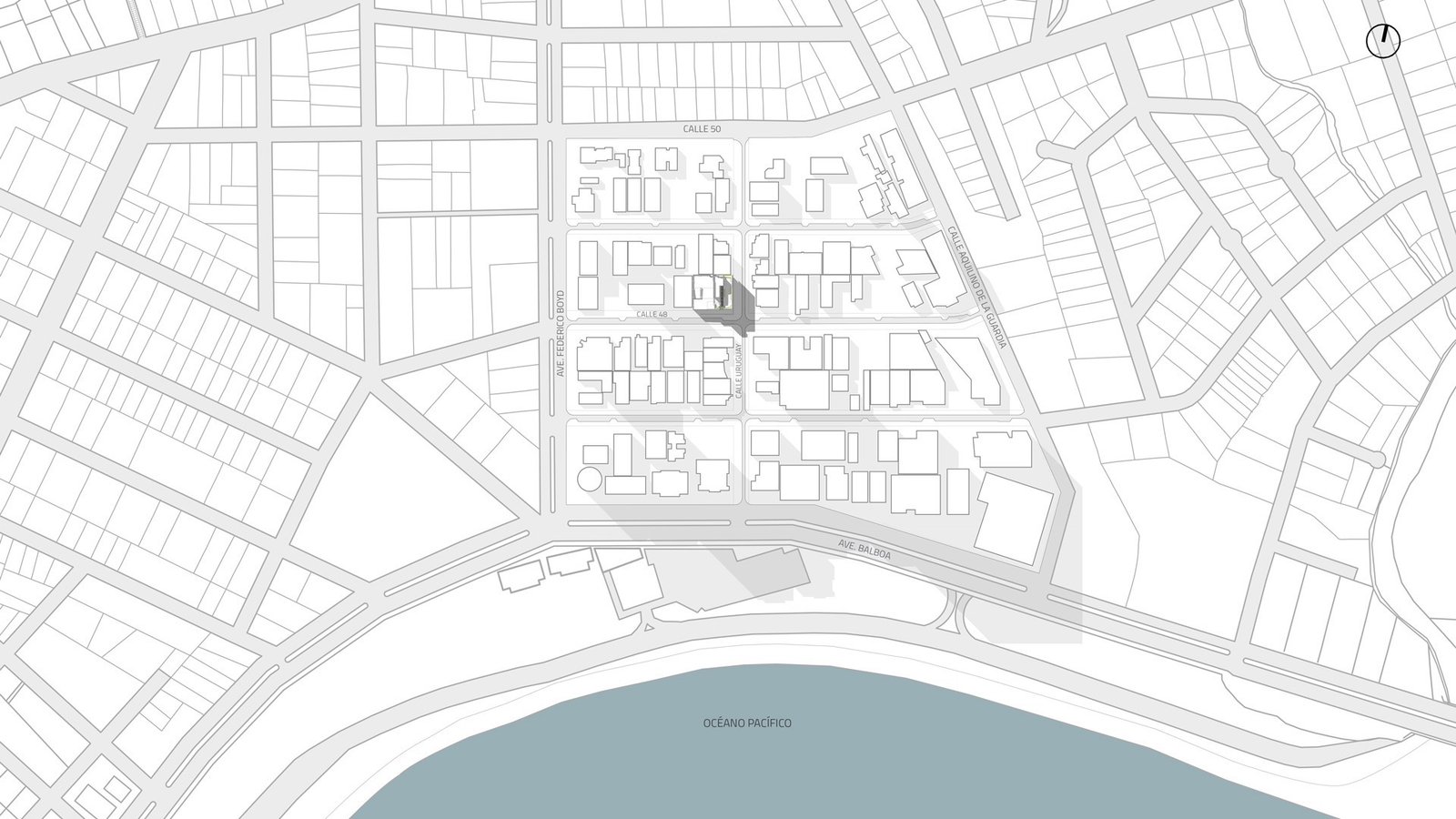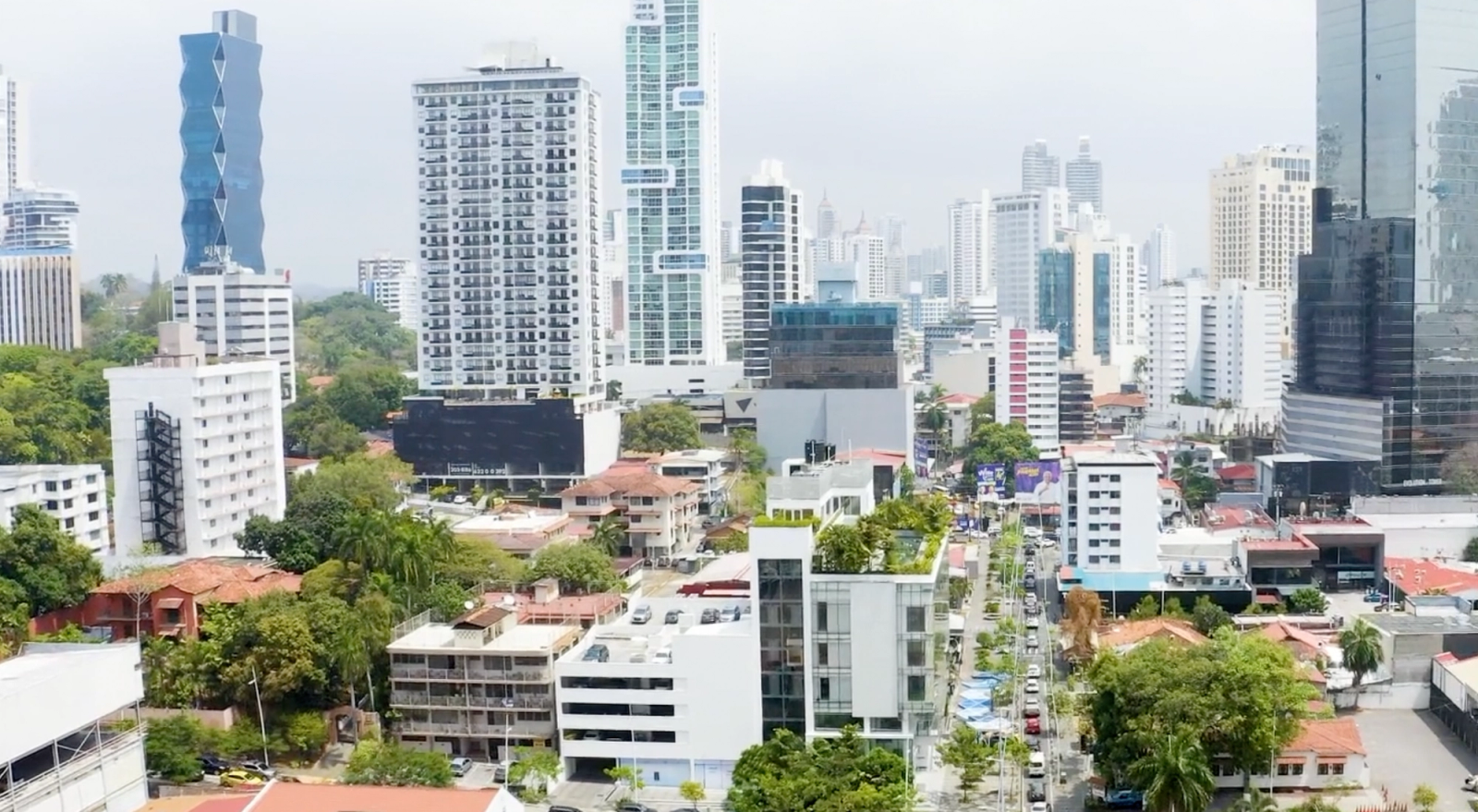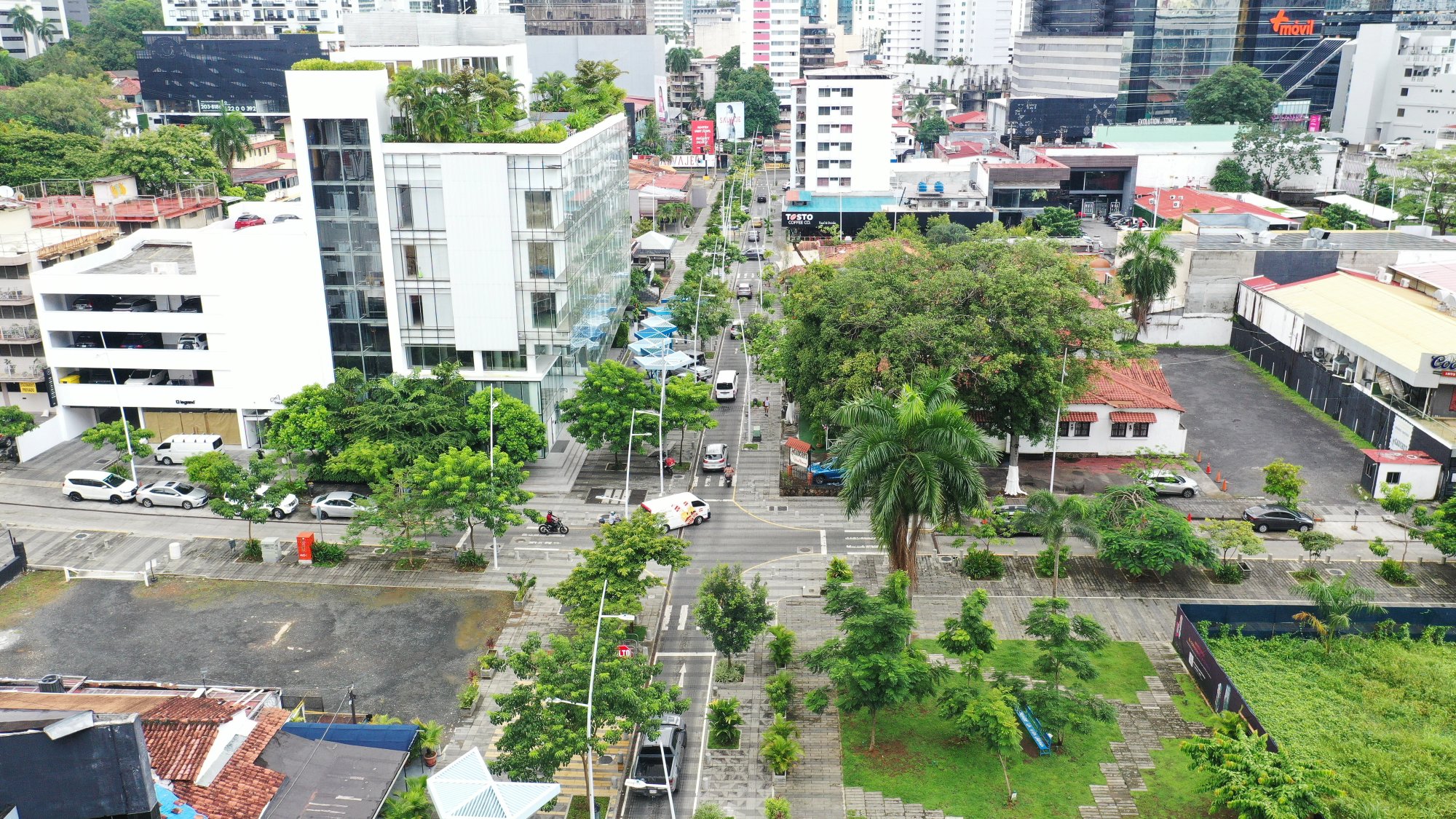The urban history of Calle Uruguay, in the heart of the Bella Vista district of Panama City, encapsulates much of the processes that have shaped the growth of the modern city. Its origins date back to the 1930s, when the neighborhood was parceled out by companies such as the Panama Bella Vista Land Company and R.W. Hebard & Co. During this period, it was consolidated as an upper middle class residential area with single family homes and mid rise buildings, where suburban comfort and the private automobile were the pillars of the modern lifestyle.
Throughout the 20th century, Calle Uruguay evolved in step with the city’s economic and social changes. In the 1970s, coinciding with Panama’s transformation into an international banking center, taller buildings began to rise, such as PH Mat and the Banco Exterior Tower (now Bac Tower). From the year 2000 onwards, the sector experienced a real estate boom that redefined its urban profile with towers like Waters on the Bay, Yoo Panamá and The Point, particularly towards Avenida Balboa.
At the same time, a vibrant nightlife scene emerged, with more than 30 restaurants, 17 bars and a high concentration of hotels. However, this dynamism also brought problems of insecurity, overcrowding and public space deterioration, which led to an ambitious urban intervention between 2017 and 2022, with an investment of more than $52 million to improve infrastructure, sidewalks, lighting and drainage.

In this context, the arrival of Mallol Arquitectos to Calle Uruguay through the conversion of the former Manrey Hotel into its corporate headquarters, the Mallol Design House, marks a turning point in the way urbanism and architectural design are approached in the area. Inaugurated in 2017 under an “adaptive use” philosophy, the building was transformed to host a creative multidisciplinary workspace spanning 8,886 m², incorporating sustainability criteria that earned it LEED certification. With energy efficiency, natural light control, thermal comfort and water management systems, this project integrates into the urban fabric as a model of architectural rehabilitation that not only restores a building but also redefines its urban and symbolic role.
The Mallol Design House was not built in isolation. It is embedded in a densely populated neighborhood, with 115 inhabitants per hectare and more than 1,500 dwellings, mostly occupied by young professionals, many of them foreigners, with high educational levels (62% hold university degrees) and incomes (44% report monthly earnings above B/. 2,500). It is also one of the areas with the highest residential and commercial rental prices in the city, reflecting its centrality, connectivity and economic potential.
The area’s zoning, predominantly mixed use with offices on the edges and commercial and nightlife activities in the center, presents both opportunities and urban tensions. In this complex environment, Mallol’s architectural proposal bets on meaningful urban regeneration, linking design with the quality of the surroundings and the productivity of those who inhabit them.

Thinking about the future of Calle Uruguay means embracing new challenges. Looking ahead, Calle Uruguay faces a dynamic present but not without urban hurdles. Although it has already recovered key spaces such as sidewalks, lighting and drainage thanks to the more than $52 million investment between 2017 and 2022, there are still abandoned lots, closed commercial premises (13.7% of the area) and security issues that affect the neighborhood’s quality of life and vitality.
Sustainability can no longer be confined to the building as an object. It must be addressed from an integrated vision: how the neighborhood is inhabited, connected, transformed and managed. Recovering the visual and pedestrian connection to the sea, ensuring safety, promoting responsible mixed uses and strengthening the bond between residents, visitors and workers are key to ensuring truly inclusive and resilient development. Only then will the neighborhood achieve vibrancy, safety and sustainability, projecting a strong urban identity in the heart of Panama City.
